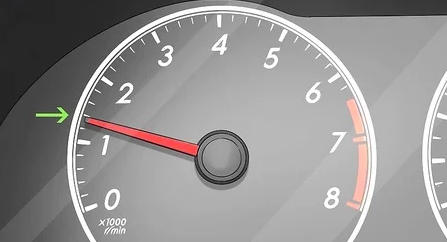If you’re having trouble understanding why your idle air control system RPM higher than expected, you’re not alone. This common issue can be quickly identified and addressed with the proper knowledge and tools. Our guide provides an in-depth look at the leading causes of this problem and the steps you can take to get your engine running smoothly again.
Understanding Higher-than-Expected Idle Air Control System RPMs

It’s not uncommon for car owners to experience a higher-than-expected RPM from their idle air control system (IAC). Fortunately, this issue can be addressed with the help of experienced mechanics and proper knowledge. In this guide, we’ll discuss the various causes of this problem and provide step-by-step instructions on how to get your engine running smoothly again. With our help, you’ll be able to identify and resolve idle air control system RPM higher than expected issues quickly and efficiently.
Common Causes
Understanding the causes of a higher-than-expected idle air control system RPM is essential for resolving the issue. The most common causes include a vacuum leak, a faulty idle air control valve, a faulty throttle position sensor, and a dirty/worn mass airflow sensor.
Vacuum Leak
A vacuum leak is a common cause of higher-than-expected idle air control system RPM. This occurs when a vacuum hose is cracked or disconnected, allowing air to enter the engine and increase the RPM. To identify a vacuum leak, visually inspect all the vacuum hoses for any signs of damage or wear and tear. Additionally, use an automotive stethoscope or a smoke machine to detect the exact location of the leak.
Faulty Idle Air Control Valve
A faulty idle air control valve can also cause high idle RPMs. This valve is responsible for adjusting air intake as the engine warms up, and if it is not functioning correctly, the engine can struggle to maintain the correct idle speed. To diagnose this issue, it is best to have a mechanic inspect the idle air control valve and replace it if necessary.
Faulty Throttle Position Sensor
A faulty throttle position sensor can also cause higher-than-expected idle air control system RPM. This sensor is responsible for communicating the position of the throttle to the engine control unit, and if it is not functioning properly, the engine can struggle to maintain the correct idle speed. To diagnose this issue, it is best to have a mechanic inspect the throttle position sensor and replace it if necessary.
Dirty/Worn Mass Airflow Sensor
A dirty or worn mass airflow sensor can also cause higher-than-expected idle air control system RPM. This sensor is responsible for measuring the amount of air entering the engine, and if it is not functioning correctly, the engine can struggle to maintain the correct idle speed. To diagnose this issue, it is best to have a mechanic inspect the mass airflow sensor and clean or replace it if necessary.
The idle air control system rpm higher than expected can be a frustrating issue to diagnose and resolve, but having a better understanding of the common causes can help. Following the steps outlined in this guide, you can quickly identify and address the issue, and your engine is running smoothly again.
Critical Takeaways for Troubleshooting Idle Air Control System RPM Higher Than Expected
- Vacuum leaks commonly cause higher-than-expected RPM from an idle air control system.
- Faulty idle air control valves, throttle position sensors, and mass airflow sensors can also cause higher-than-expected RPMs.
- Visual inspection and automotive diagnostic tools can help identify the issue’s source.
- Replace or repair faulty parts, clean dirty sensors, and fix any vacuum leaks to get the engine running smoothly again.
